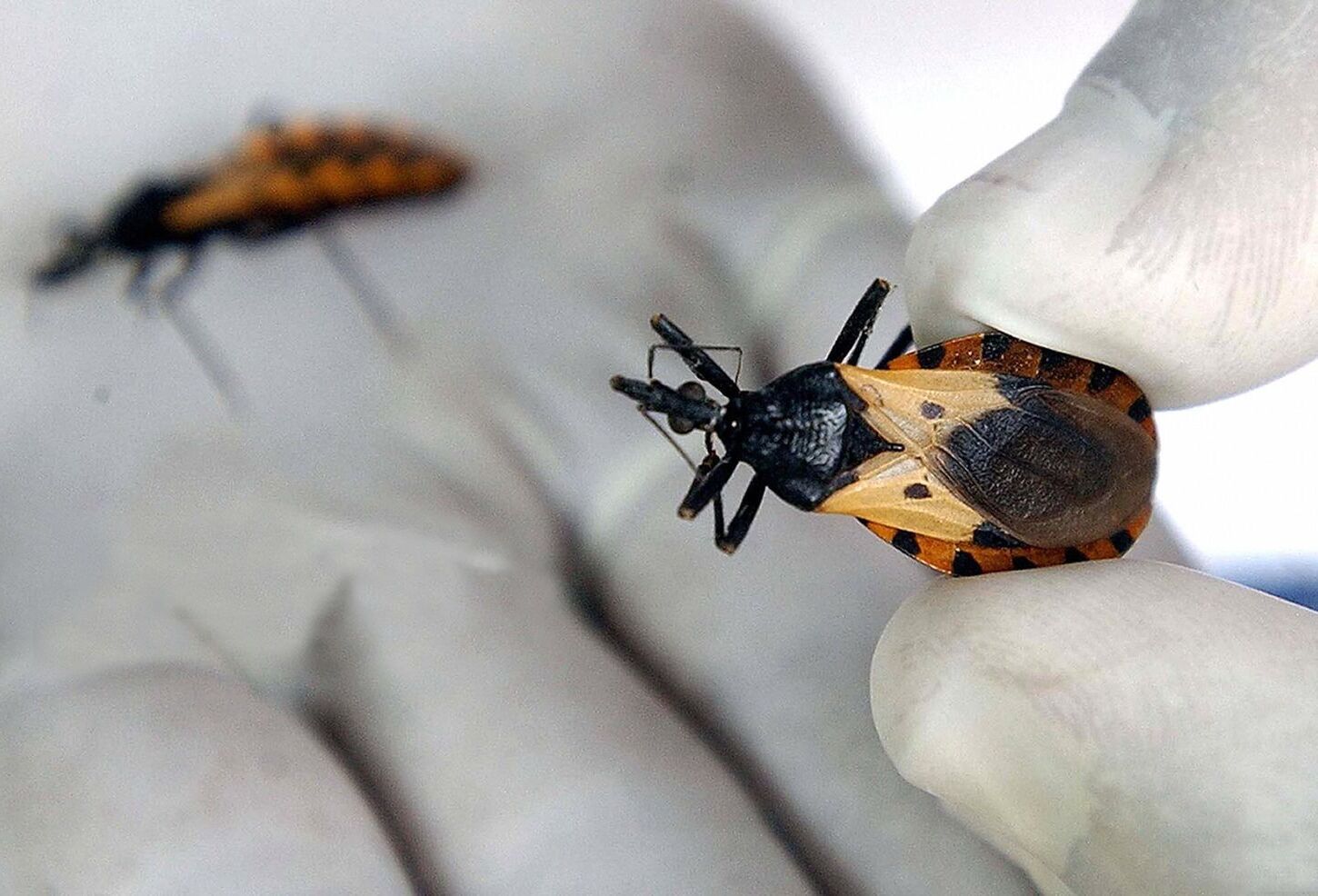
Chagas disease, also known as American trypanosomiasis, is a parasitic infection caused by the protozoan Trypanosoma cruzi. Discovered by Brazilian physician Carlos Chagas in 1909, this disease primarily affects Latin America but has spread globally. Transmission occurs through the bite of an infected triatomine bug, contaminated food, congenital means, blood transfusions, organ transplants, and lab accidents. The acute phase often goes unnoticed, while chronic infection can lead to severe heart, digestive, and neurological issues. Early treatment with antiparasitic medications like benznidazole and nifurtimox is crucial. Despite being a neglected tropical disease, efforts in vector control, blood screening, and public health initiatives aim to curb its impact.
Key Takeaways:
- Chagas disease, discovered by Dr. Carlos Chagas in 1909, affects millions in Latin America. Preventing transmission through bug control and blood screening is crucial for public health.
- Early treatment is key for Chagas disease. Public health efforts, including vector control and blood screening, play a vital role in combating this neglected tropical disease.
Discovery and Origin
Chagas disease, also known as American trypanosomiasis, has a rich history and a significant impact on public health. Let's dive into its discovery and origin.
-
Chagas disease was first identified by Brazilian physician Carlos Chagas in 1909. He discovered the parasite Trypanosoma cruzi and described its life cycle, clinical manifestations, and epidemiology.
-
The disease is named after Carlos Chagas. His contributions to tropical medicine and parasitology were groundbreaking.
Global Prevalence and Transmission
Understanding how widespread Chagas disease is and how it spreads is crucial for tackling it effectively.
-
About 6-7 million people worldwide are estimated to be infected with T. cruzi. Most cases are in Latin America, affecting around 10-12 million people.
-
Chagas disease is transmitted through the bite of an infected triatomine bug. Other transmission methods include oral (food-borne), congenital, blood transfusions, organ transplantation, and laboratory accidents.
-
Vector control is a key strategy to prevent Chagas disease in endemic areas. This includes eliminating triatomine bug habitats and reducing their populations.
-
Blood screening prior to transfusion and transplantation is crucial. This helps prevent the transmission of T. cruzi through blood products.
Symptoms and Complications
Chagas disease can manifest in various ways, from acute symptoms to chronic complications.
-
Chronic infection with T. cruzi can persist unnoticed for over 30 years. This can lead to complications like abnormal heart rhythm, heart failure, digestive problems, and sudden cardiac death.
-
The acute phase of Chagas disease typically lasts about two months. Symptoms may include fever, swelling of lymph nodes and tissues, conjunctivitis, and skin lesions.
-
About one-third of carriers develop chronic symptoms. These can include cardiac alterations, digestive issues, neurological problems, or mixed alterations.
-
Up to a third of people with chronic infection develop cardiac alterations. These are the major cause of death in Chagas disease patients.
-
One in ten people with chronic infection develop digestive, neurological, or mixed alterations. These symptoms may require specific treatment.
Treatment and Challenges
Treating Chagas disease effectively requires early intervention and overcoming various challenges.
-
Chagas disease is curable if antiparasitic treatment is initiated early in the acute phase. In chronic infection, treatment and follow-up can potentially prevent or curb disease progression.
-
The most commonly used antiparasitic treatments are benznidazole and nifurtimox. These medications are effective in the acute phase but less so in the chronic phase.
-
Many cases of Chagas disease go untreated due to inadequate healthcare facilities. Lack of awareness and social determinants of health also play a role.
Recognition and Public Health Efforts
Efforts to combat Chagas disease have gained momentum with global recognition and public health initiatives.
-
Chagas disease was recognized as a neglected tropical disease (NTD) by the World Health Organization (WHO) in 2005. This recognition has led to increased efforts in prevention, diagnosis, and treatment.
-
World Chagas Disease Day is celebrated annually on April 14. This marks the anniversary of Carlos Chagas' discovery.
-
Chagas disease is a complex health problem typical of neglected tropical diseases. It poses significant challenges for global health due to its widespread nature and the lack of effective treatment in many regions.
-
Chagas disease has a substantial economic burden, particularly in Latin America. The disease affects not only individuals but also communities and economies.
Modes of Transmission
Chagas disease can spread through various routes, each requiring specific preventive measures.
-
The primary mode of transmission is through the bite of an infected triatomine bug. This vector-borne transmission is a significant public health concern in endemic areas.
-
Oral transmission occurs through the consumption of contaminated food. This mode of transmission highlights the importance of food safety in preventing Chagas disease.
-
Congenital transmission occurs when a pregnant woman is infected with T. cruzi. This can lead to the transmission of the parasite to the fetus.
-
Blood-borne transmission can occur through blood transfusions or organ transplants. Proper screening for T. cruzi is essential.
-
Laboratory accidents involving T. cruzi can also lead to transmission. This underscores the importance of proper laboratory protocols and safety measures.
Chronic Infection and Immune Response
The persistence of chronic infection and the body's immune response play crucial roles in Chagas disease.
-
Chronic infection with T. cruzi can persist for decades without symptoms. This makes it challenging to diagnose and treat the disease, especially in asymptomatic carriers.
-
The immune response to T. cruzi infection is complex. It involves both innate and adaptive immunity, but the parasite has evolved mechanisms to evade the host's immune system.
-
Chronic T. cruzi infection can lead to autoimmune responses. These responses contribute to the pathogenesis of the disease.
Complications and Diagnosis
Chagas disease can lead to severe complications, and accurate diagnosis is essential for effective management.
-
Cardiac involvement is a major complication of chronic Chagas disease. The parasite can cause inflammation and fibrosis in the heart.
-
Digestive involvement can manifest as megacolon or megaoesophagus. These conditions can lead to significant morbidity and mortality.
-
Neurological involvement can occur in the form of meningoencephalitis. This highlights the need for comprehensive care and follow-up.
-
Mixed involvement refers to the coexistence of cardiac, digestive, and neurological symptoms. This mixed presentation underscores the complexity of the disease.
-
Diagnosis involves serological tests, molecular diagnostics, and imaging studies. The choice of diagnostic method depends on the phase of the disease and the availability of resources.
-
Serological tests detect antibodies against T. cruzi. These tests are commonly used in the diagnosis of chronic Chagas disease.
-
Molecular diagnostics, such as PCR, provide precise figures on the cure rate. They help in monitoring the parasite load.
-
Imaging studies like echocardiography and colonoscopy are essential. These studies help in monitoring disease progression and assessing the need for specific treatments.
Public Health Strategies and Research
Efforts to combat Chagas disease involve various public health strategies and ongoing research.
-
Public health strategies include vector control, blood screening, and testing high-risk populations. Information, education, and communication activities are also crucial.
-
Vector control initiatives involve eliminating the triatomine bug habitats. This is achieved through insecticide spraying, house cleaning, and community-based programs.
-
Blood screening programs are crucial in preventing blood-borne transmission. Universal screening of blood banks in Latin America has significantly reduced the risk.
-
Testing and treating high-risk populations is essential. This includes girls, women of reproductive age, newborns, and siblings of mothers with infection.
-
Community-based programs aim to educate communities about the risks. These programs involve health education, awareness campaigns, and community participation.
-
Access to healthcare is a significant challenge. Inadequate healthcare facilities and lack of awareness among healthcare providers contribute to delayed diagnosis and treatment.
-
Social determinants of health exacerbate the burden of Chagas disease. Factors like poverty, lack of education, and inadequate housing play a role.
-
Research and development focus on improving diagnostic tools and developing new treatments. Understanding the immune mechanisms involved in the disease is also crucial.
-
Vaccine development is an active area of research. Immunization with a T. cruzi cyclophilin-19 deletion mutant has shown promise in protecting against acute Chagas disease in mice.
-
Natural products have been explored as potential antichagasic agents. These natural products offer a promising avenue for developing new treatments.
Economic Burden and Global Health Efforts
Chagas disease has a significant economic impact and requires global health efforts to manage effectively.
-
The global economic burden of Chagas disease is substantial. A computational simulation model estimated that the annual economic burden in the Americas is significant.
-
Chagas disease remains a significant public health challenge in the 21st century. While there have been successes, much work remains to be done.
-
Chagas disease is not limited to endemic areas. It is carried by hundreds of thousands of people in Europe, the United States, Canada, Japan, and Australia.
-
Despite the challenges, there have been public health successes. Universal screening of blood banks has significantly reduced the risk of transmission.
-
The WHO roadmap 2021-2030 includes Chagas disease among the conditions targeted for elimination. The roadmap proposes five targets, including verification of interruption of various transmission routes.
-
WHO aims to strengthen global networking and reinforce regional and national capacities. This collaborative approach is essential in addressing the complex health problem posed by Chagas disease.
Final Thoughts on Chagas Disease
Chagas disease, caused by the Trypanosoma cruzi parasite, remains a significant global health issue. Affecting millions, primarily in Latin America, it spreads through various means like vector-borne transmission, blood transfusions, and congenital transmission. Early detection and treatment are crucial, especially in the acute phase, to prevent severe complications like heart failure and digestive issues. Public health strategies, including vector control, blood screening, and community education, play a vital role in managing and preventing this disease. Despite challenges, ongoing research and development efforts aim to improve diagnostics, treatments, and possibly vaccines. Global collaboration and increased awareness are essential to combat this neglected tropical disease effectively. By understanding its complexities and implementing comprehensive public health measures, we can reduce the burden of Chagas disease and improve the quality of life for those affected.
Frequently Asked Questions
Was this page helpful?
Our commitment to delivering trustworthy and engaging content is at the heart of what we do. Each fact on our site is contributed by real users like you, bringing a wealth of diverse insights and information. To ensure the highest standards of accuracy and reliability, our dedicated editors meticulously review each submission. This process guarantees that the facts we share are not only fascinating but also credible. Trust in our commitment to quality and authenticity as you explore and learn with us.


